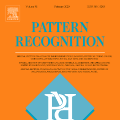Nowadays, using vibration data in conjunction with pattern recognition methods is one of the most common fault detection strategies for structures. However, their performances depend on the features extracted from vibration data, the features selected to train the classifier, and the classifier used for pattern recognition. Deep learning facilitates the fault detection procedure by automating the feature extraction and selection, and classification procedure. Though, deep learning approaches have challenges in designing its structure and tuning its hyperparameters, which may result in a low generalization capability. Therefore, this study proposes an ensemble deep learning framework based on a convolutional neural network (CNN) and Dempster-Shafer theory (DST), called CNN-DST. In this framework, several CNNs with the proposed structure are first trained, and then, the outputs of the CNNs selected by the proposed technique are combined by using an improved DST-based method. To validate the proposed CNN-DST framework, it is applied to an experimental dataset created by the broadband vibrational responses of polycrystalline Nickel alloy first-stage turbine blades with different types and severities of damage. Through statistical analysis, it is shown that the proposed CNN-DST framework classifies the turbine blades with an average prediction accuracy of 97.19%. The proposed CNN-DST framework is benchmarked with other state-of-the-art classification methods, demonstrating its high performance. The robustness of the proposed CNN-DST framework with respect to measurement noise is investigated, showing its high noise-resistance. Further, bandwidth analysis reveals that most of the required information for detecting faulty samples is available in a small frequency range.
翻译:目前,利用振动数据与模式识别方法一起使用振动数据是结构最常见的错漏度测算策略之一;然而,其性能取决于振动数据所提取的特征、培训分类器所选的特征以及用于模式识别的分类器。深层学习通过将特征提取和选择以及分类程序自动化,便利了故障检测程序。虽然深层学习方法在设计其结构和调整其超参数方面存在挑战,这可能导致普遍化能力低。因此,本研究提议了一个混合神经神经网络(CNN)和Dempster-Shafer理论(DST)的混合深度学习框架。在这种框架内,一些带有拟议结构的CNN的CNN首先经过培训,然后,通过采用改进的DST方法将选定的CNN产出结合起来。为了验证拟议的CNN-D框架,它被应用到一个由最高级的宽带振动响应Nickel Alloly第一级涡轮叶片测量(D)理论,称为CNNNCR-S-ST高级分析框架, 显示其高度和高度的预测值。通过拟议的统计分析,STRS-S-S-S-real-real-real-real-real-real-reax 显示其高度框架。





